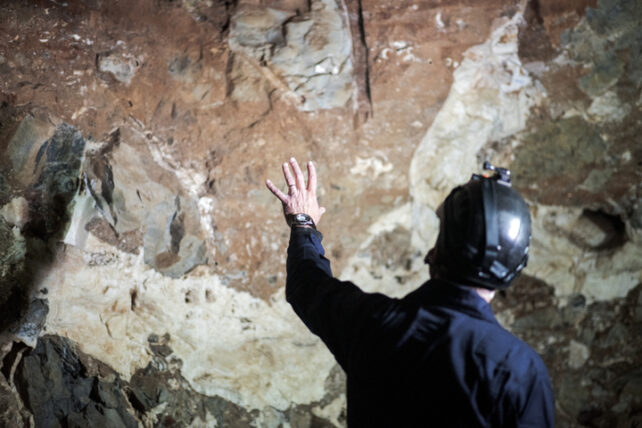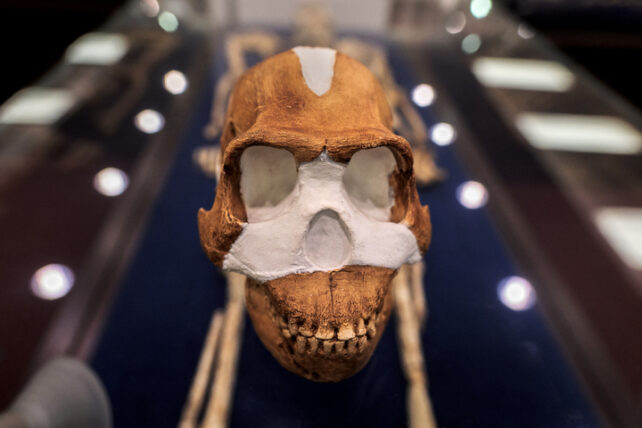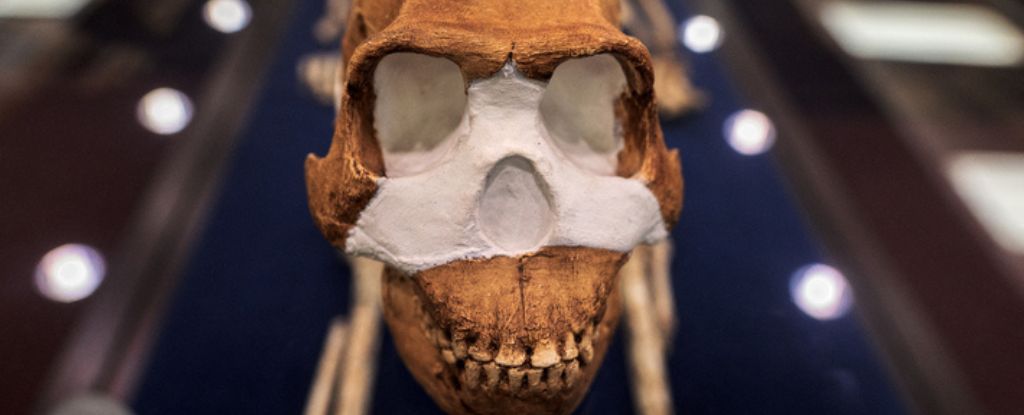Paleontologists in South Africa have made an extraordinary discovery – the world’s oldest known burial site which contains the remains of a small-brained relative of humans previously believed to be incapable of complex behavior.
Led by renowned paleoanthropologist Lee Berger, the researchers announced in June that they had unearthed several specimens of Homo naledi – a Stone Age hominid that climbed trees. These remains were found buried about 30 meters underground in a cave system within the Cradle of Humankind, a UNESCO World Heritage site near Johannesburg.
The scientists wrote in a series of preprint papers published in eLife:
“These are the oldest known burials in the hominin record, preceding evidence of Homo sapiens interments by at least 100,000 years.”
This groundbreaking find challenges the current understanding of human evolution, which suggests that complex activities like burying the dead were made possible by the development of bigger brains.
The previously discovered oldest burials in the Middle East and Africa belonged to Homo sapiens and were approximately 100,000 years old. In contrast, the burials in South Africa by Berger and his team date back to at least 200,000 BC.
What’s particularly significant is that these ancient burials belong to Homo naledi. This species existed at the intersection between apes and modern humans, with brains the size of oranges and standing about 1.5 meters tall.
The species discovered by Berger – with their curved fingers and toes, tool-wielding appendages, and feet suitable for walking – had already challenged the notion of a linear evolutionary path.
Homo naledi is named after the “Rising Star” cave system where the first bones were found in 2013.

The oval-shaped burials at the center of the new studies were found during excavations that began in 2018. The evidence indicates that the holes were intentionally dug and later filled to cover the bodies. At least five individuals were interred.
The researchers stated, “These discoveries demonstrate that mortuary practices were not limited to H. sapiens or other hominins with large brain sizes.”
The burial site indicates that Homo naledi was capable of complex emotional and cognitive behavior, which challenges previous assumptions.
Brain size
In addition to the burial site, researchers also found engravings of geometric shapes, including a “rough hashtag figure,” on the intentionally smoothed surfaces of a nearby cave pillar.
Berger, in an interview with AFP, remarked, “This means that humans not only aren’t unique in the development of symbolic practices, but may not have even invented such behaviors.”
As expected, such statements will likely generate controversy within the field of paleontology. Berger, who has been criticized for lacking scientific rigor and making premature conclusions, ruffled feathers in 2015 when he first proposed that Homo naledi was capable of more than its cranial size suggested.
He stated, “That was too much for scientists to accept at the time. We’re about to prove that it’s untrue.”

While further analysis is required, these discoveries have the potential to reshape our understanding of human evolution. The researchers wrote, “Burial practices, symbolic rituals, and even ‘art’ may have a far more complex, dynamic, and non-human history than previously believed.”
Agustín Fuentes, a professor of anthropology at Princeton University and co-author of the studies, stated, “These findings reveal that burial, meaning-making, and even artistic expressions could have existed long before our species emerged.”
Anthropologist Carol Ward from the University of Missouri, who was not involved in the research, acknowledged the potential significance of these findings, stating, “I look forward to further evidence on how the arrangement of the remains rules out alternative explanations, and I anticipate the results following peer review.”
Ward also noted that the paper acknowledges the possibility that later hominins could have made markings on the cave walls.
© Agence France-Presse
An earlier version of this article was published in June 2023.


